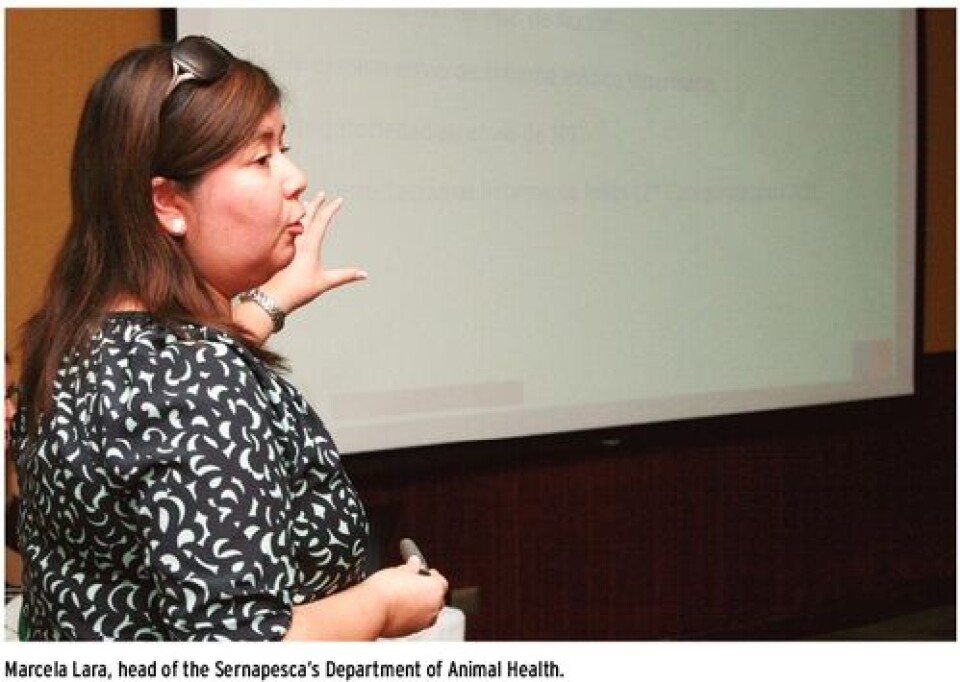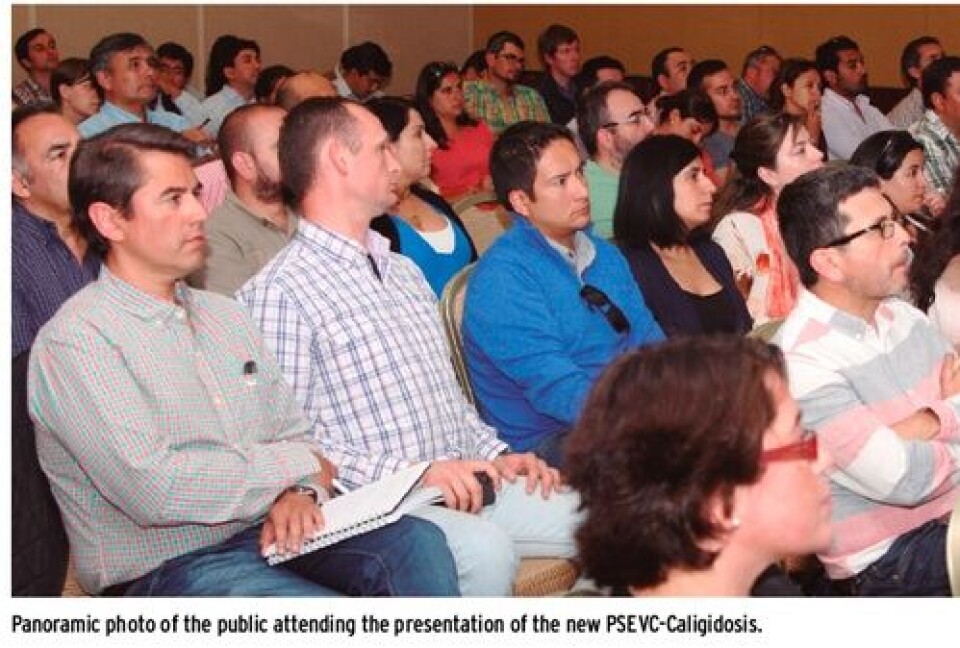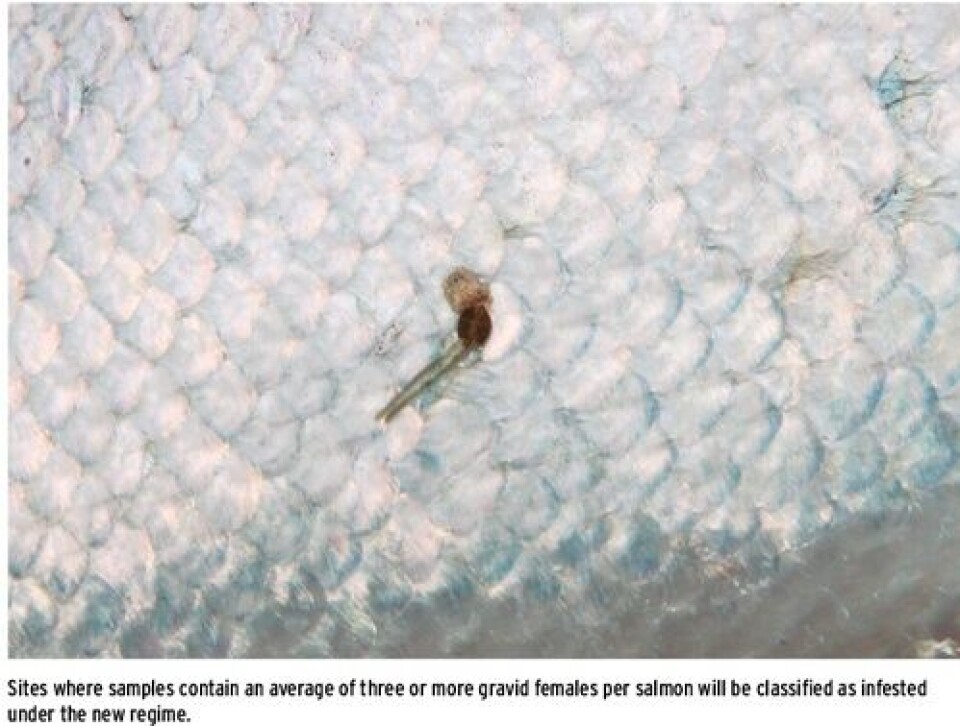New lice legislation launched in Chile
By Patricio Feest

The Chilean Service of Fisheries and Aquaculture (Sernapesca) recently presented several changes in policies and standards to control the most frequent parasite in Chilean salmon farms, Caligus rogercresseyi, which still appears as one of the largest headaches for the local salmon industry, together with the bacterial disease SRS. Alicia Gallardo, deputy director of Sernapesca, explained that the modifications to the Specific Sanitary Surveillance and Control Programme of Caligidosis (PSEVC-Caligidosis) will reinforce the measures already taken with different stakeholders in the industry. “These new measures are mainly related to the coordination of the industry, both for treatments that control this parasite, and to reinforce the system of delousing agents, in addition to which some new therapeutic tools have been added,” Gallardo stated. “This means today we have about 4 per cent of farms of high spread (CADs, by their initials in Spanish), a historically low figure compared to previous years,” he added. “We collected all these measures and presented a programme that strengthens them and is oriented to continue working with a coordinated approach, focusing on a geographical area, strengthening communication and transparency of information from the companies that participate in these areas,” Gallardo said. In this context, the regional director of Sernapesca, Eduardo Aguilera, added that: “The new measures incorporated into PSEVC-Caligidosis will improve the farming conditions for the different companies in the area. In addition, some other advances and further coordination are being integrated in environmental aspects, in order to obtain better performance in the industry”. This new sanitary programme was presented by the head of the Sernapesca’s Department of Animal Health, Marcela Lara, who commented the main changes related to prevention, greater knowledge of the parasite, appropriate positive control and treatment strategy.

Surveillance Under the new programme, the number of Caligus that determines when a farm is classified as a CAD will no longer be a total of nine adults, but will be a maximum of three gravid females instead. “With the new programme, those farming sites with an average load higher than three gravid females after the treatment window, will be considered as CADs, while sites engaged in the harvesting process will no longer be excluded from the CAD categorization,” Lara explained. “Reports will continue on a weekly basis with the same number of ten fish sampled per cage in four cages and recording three developmental stages of the parasite (juveniles, gravid females and mobile adults). However, with the new regulation, selection of cages must be done through random sampling,” she added. She also commented that companies should now present a table with four cages that will rotate, depending on the number of cages of each farm, which will be sampled randomly for the entire production cycle. Meanwhile, these regulatory changes also include surveillance of pre-harvest holding pens. “These ones will not be categorized as CADs and the information will only be used to verify the abundances in the farms of origin, only to cross-information," Lara said. This surveillance considers sampling one cage for every site holding Atlantic salmon or rainbow trout, within the first 24 hours after reception of the first group of fish.
Control Among the main changes related to sea lice control, Lara mentioned that producers now can only use a maximum of three consecutive treatments with delousing products of the same family or group. “With this new programme, we want to encourage the use of non-pharmacological treatments. If companies use non-drug products, such as hydrogen peroxide, the farm will not be categorized as a CAD. Likewise, this product could be used outside of the treatment window,” she said. Another change has to do with treatment windows. In this sense, the head of the Department of Health said that “these will have greater flexibility and will be established by Sernapesca and ruled by groups of licenses (neighborhoods) and/or macrozones and be differentiated by season and region”. A management plan for caligus has also been included among the main changes in prevention. In this sense, neighborhoods with higher risk of parasites should mandatorily submit a lice management plan. In addition, every neighborhood must submit extra measures to apply for reducing lice abundances and controlling the spread within the neighborhood, considering a rotation scheme of delousing agents and an oceanographic justification for the coordination strategy. This preventive plan must be submitted two months before the start of the production cycle. If the group of aquaculture licenses does not establish a plan, Sernapesca will establish the measures to be implemented. The number of farms in operation in the neighborhood and susceptible species, the number of delousing treatments administered by immersion and neighborhoods with a higher prevalence of farms of high spread should be included among the criteria to consider in a management plan.

Control actions If the farm is reported as a CAD for the first time, the farmer will have to inform what actions of coordinated control will be implemented. Should they face a second consecutive report as a CAD, the farm will need to send a parasite report within 48 hours, explaining why the treatment failed. This report should detail the sanitary status of the farm, informing potential risk factors that may have influenced the effectiveness of the treatments performed and the results of monitoring Caligus resistance, if any. "The idea is that farms perform a critical analysis of the situation and determine what problems there are," Lara explained. If the farm is reported as a CAD three consecutive times, that farm will have to immediately harvest all of the biomass present in the site, whereas if there are three CAD notifications in a six-week period, 25 per cent of the farm will be mandatorily harvested.
Procedures and formats Finally, the manager of the Caligus programme, María José Montequin, presented the procedures and forms involved in the new scheme. As for the weekly monitoring, Montequin explained that a form for reporting four farming units (cages) was established according to the methodology of selecting random numbers, called monitoring report of cages in the production cycle. Selected cages are established early in the cycle. Regarding the report of treatments, there are two forms for pharmacological and non-pharmacological treatments, which must be submitted for each neighborhood, three business days before the start of the treatment window.






















































